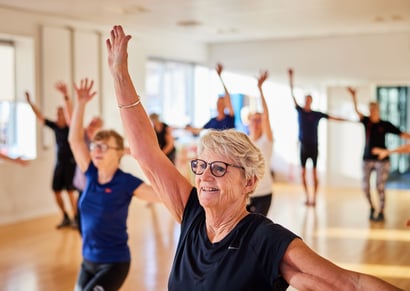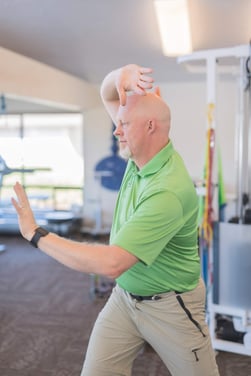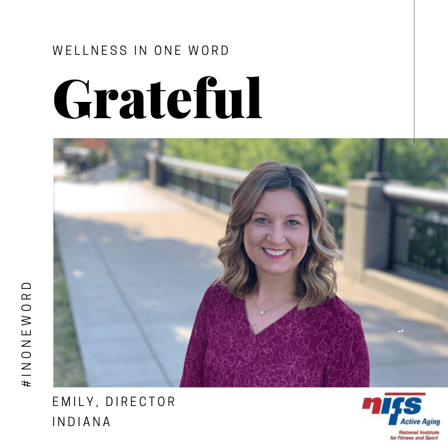Why use a GPS on a road trip? Why follow the instructions when putting together a dresser? I know California is south-west, I’m sure I could get there eventually. I also know what a dresser looks like. This line of thinking gets us stuck in New Mexico with a dresser that’s wobbly and, strangely, has extra screws. Changing a habit is a lot like taking a trip or building a dresser; sure, maybe you’ll stumble into success. But wouldn’t you rather have a GPS or step-by-step instructions? It seems like that would make everything simpler. Goal setting is our step-by-step guide to making lasting changes.
 Goal-setting’s impact has been defined in two ways; the first is the indirect thought-process view which states that “outcome, performance, and process goals influence behavior indirectly by affecting important psychological factors such as confidence and anxiety” (1). A study of swimmers found that those with high goal-setting ability exhibited higher confidence, less anxiety and improved performance compared to their peers with low goal-setting ability (2).
Goal-setting’s impact has been defined in two ways; the first is the indirect thought-process view which states that “outcome, performance, and process goals influence behavior indirectly by affecting important psychological factors such as confidence and anxiety” (1). A study of swimmers found that those with high goal-setting ability exhibited higher confidence, less anxiety and improved performance compared to their peers with low goal-setting ability (2).
The second is the direct mechanistic view and this view “specifies that goals influence performance in one of four direct ways; goals direct attention to important elements of the skill being performed, goals mobilize performer efforts, goals prolong performer persistence, and goals foster the development of new learning strategies” (1,3). Let’s say an individual wants to lose 50 pounds in 1 year. That’s a very big goal and a very long time frame; so, for example, we would break it down to 1 pound per week. Making the goal more manageable “mobilizes effort” because the progress is much easier to see than it was prior. If the individual kept staring at 50 pounds every day, they could eventually get discouraged and their effort could diminish; comparatively, 1 pound a week doesn’t seem too bad. During this process they were also exercising for the first time and learning the skills that go along with that, skills that wouldn’t have been learned unless they set their original goal. Setting a good goal is just as important as acting on it. To set a good goal we need to go over what makes a good goal and the steps required to get there.
We define good goals with the acronym SMARTS. Specific, goals should indicate exactly what wants to be achieved; Measurable, goals need to be quantifiable to track progression; Action-oriented, goals should indicate specific actions to achieve the stated goal; Realistic, the has to be achievable in the first place, if we shoot to high we just get discouraged; Timely, goals shouldn’t continue indefinitely, they should have a set time-table; Self-determined, goals need to be set by, or with input from, the individual themself.
Let’s continue with our earlier example of losing 50 pounds in a year, or 1 pound a week. The goal meets all the criteria except “action-oriented”; to improve upon this goal we must come up with a plan of action to ensure we reach the goal. A plan of action for this goal might be as simple as walking for 30 minutes a day, 3 days a week. The action plan is part also gives us sub-goals to meet along the way.
Think of a long-term goal like a staircase, we start at the bottom and our goal – losing 50 pounds in a year – is at the top. We must approach our goal one step at a time, just as we would the stairs. So, we break the goal into smaller parts to make it more manageable, but in the earlier example we only talked about outcome goals – losing 1 pound a week – there are two other types of goals that are just as important, process and performance goals.
Process goals are important because they teach us to value the process, so we don’t get discouraged if we miss our outcome. In our example the individuals process goals would be to walk 3 days a week for 30 minutes (the action plan). Every week they walk 3 days a week is a victory and should be treated as such. Process goals, like all goals, are fluid and should be adjusted as we progress. Say, for example, walking 3 days a week is no longer challenging. At this point we should adjust our goal and make it more challenging – the best goals are moderately difficult - by adding strength sessions, increasing frequency (days being walked) or intensity (hills/stairs, jogging or time walked).
Performance goals are about competing against yourself. In this instance a performance goal might be to walk more miles than you did last month. Our individual walked 12 miles in August; so, their goal for September is to walk 14 miles. Similarly to process goals, performance goals give us something else to focus on to reduce any anxiety we may be feeling about our desired outcome. It goes back to mobilizing effort; sub-goals like these give us something to strive for day-to-day, week-to-week, and month-to-month. They help us focus on the habit we’re building regardless of the result.
Goal setting is a skill; it takes practice to set good goals and be able to follow through. It is a universal skill that can be applied to your career or personal life, we’ve just chosen to talk about it through the lens of exercise today. Hopefully, you’ll take the skills mentioned here to heart because, I’d hate for you to wind up in New Mexico with a wobbly dresser and some extra screws.
Sources:
- Weinberg, Robert S., and Daniel Gould. Foundations of Sport and Exercise Psychology. Sixth ed., Human Kinetics, 2015.
- Burton, D. (1989). Winning isn’t everything: Examining the impact of performance goals on collegiate swimmers’ cognitions and performance. The Sport Psychologist, 3, 105–132.
- Locke, E.A., & Latham, G.P. (2002). Building a practically useful theory of goal setting and task motivation: A 35-year odyssey. American Psychologist, 57(9), 705-717.

 The quick answer, we became experts because we have been specializing in this population for over 20 years in our work in senior living communities. It takes time and dedication to develop a niche as strong as what NIFS has within an industry. We have been part of the wellness evolution as fitness centers were included in renovations and master plans and communities looked to staffing and programming models to help their residents use these amenities safely. We’ve further witnessed consumer options evolve in the senior living landscape with more choices than ever before on where older adults choose to live including 55+ neighborhoods, IL communities, to lifeplan communities. Each environment has its own priorities and challenges in supporting the health and fitness needs of the residents who live there but all understand the necessity of providing vibrant lifestyles. The industry is expected to
The quick answer, we became experts because we have been specializing in this population for over 20 years in our work in senior living communities. It takes time and dedication to develop a niche as strong as what NIFS has within an industry. We have been part of the wellness evolution as fitness centers were included in renovations and master plans and communities looked to staffing and programming models to help their residents use these amenities safely. We’ve further witnessed consumer options evolve in the senior living landscape with more choices than ever before on where older adults choose to live including 55+ neighborhoods, IL communities, to lifeplan communities. Each environment has its own priorities and challenges in supporting the health and fitness needs of the residents who live there but all understand the necessity of providing vibrant lifestyles. The industry is expected to 
 At the
At the  It’s not uncommon for people to describe uncomfortable physical sensations; musculoskeletal discomfort has become increasingly common. If you think about the average office worker, they will likely talk about pain in the neck, upper traps, and shoulders. Why these specific areas? When people are stressed, they have a tendency to hunch over and round the upper back. This tightens the aforementioned muscles, causing irritation. Trauma and chronic stress can have a lingering impact on our bodies; the body can unconsciously tense up, causing chronic pain.
It’s not uncommon for people to describe uncomfortable physical sensations; musculoskeletal discomfort has become increasingly common. If you think about the average office worker, they will likely talk about pain in the neck, upper traps, and shoulders. Why these specific areas? When people are stressed, they have a tendency to hunch over and round the upper back. This tightens the aforementioned muscles, causing irritation. Trauma and chronic stress can have a lingering impact on our bodies; the body can unconsciously tense up, causing chronic pain. 
.jpg?width=527&name=GettyImages-985893328%20(1).jpg) is where it is critical that communities identify their wellness champion. This person can act as a catalyst in eliminating the silos and bringing everyone together to work from a unified vision of how lifestyle offerings and services are delivered to residents.
is where it is critical that communities identify their wellness champion. This person can act as a catalyst in eliminating the silos and bringing everyone together to work from a unified vision of how lifestyle offerings and services are delivered to residents.
.jpg?width=434&name=GettyImages-1161759077%20(1).jpg) When we’re talking about whole-person well-being, it isn’t just the health care options available, or the fitness program offerings. Communities should be cautious about how narrowly they define “wellness” when connecting it to their physical spaces or services. This can have a significant impact in the messaging of your community culture to your residents and prospective residents. Supporting resident well-being should flow through every nook, cranny, department, and service under your roof; however, many communities miss opportunities because they want the word “wellness” labeled on a space or department.
When we’re talking about whole-person well-being, it isn’t just the health care options available, or the fitness program offerings. Communities should be cautious about how narrowly they define “wellness” when connecting it to their physical spaces or services. This can have a significant impact in the messaging of your community culture to your residents and prospective residents. Supporting resident well-being should flow through every nook, cranny, department, and service under your roof; however, many communities miss opportunities because they want the word “wellness” labeled on a space or department. When I asked our NIFS team members to share their “word”, I received submissions of vitality, fulfillment, longevity, power, and balance. Our staff join our team from all walks of life and personal and professional experiences, yet their commonality is a strong desire and passion to work with seniors. Through providing individualized exercise services and teaching a variety of exercise classes, our staff are building relationships and helping improve the quality of life for older adults across the country. The tone and context of their submissions was similarly unified.
When I asked our NIFS team members to share their “word”, I received submissions of vitality, fulfillment, longevity, power, and balance. Our staff join our team from all walks of life and personal and professional experiences, yet their commonality is a strong desire and passion to work with seniors. Through providing individualized exercise services and teaching a variety of exercise classes, our staff are building relationships and helping improve the quality of life for older adults across the country. The tone and context of their submissions was similarly unified.